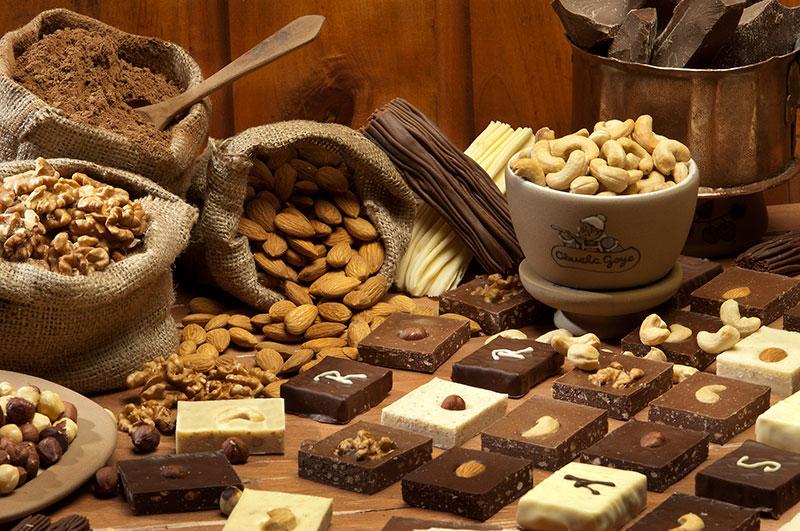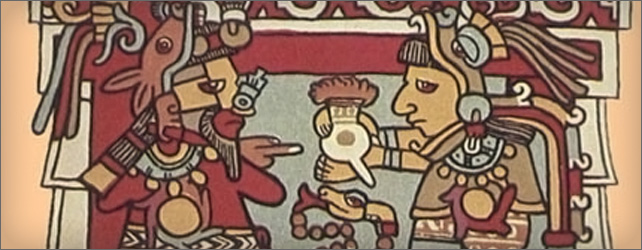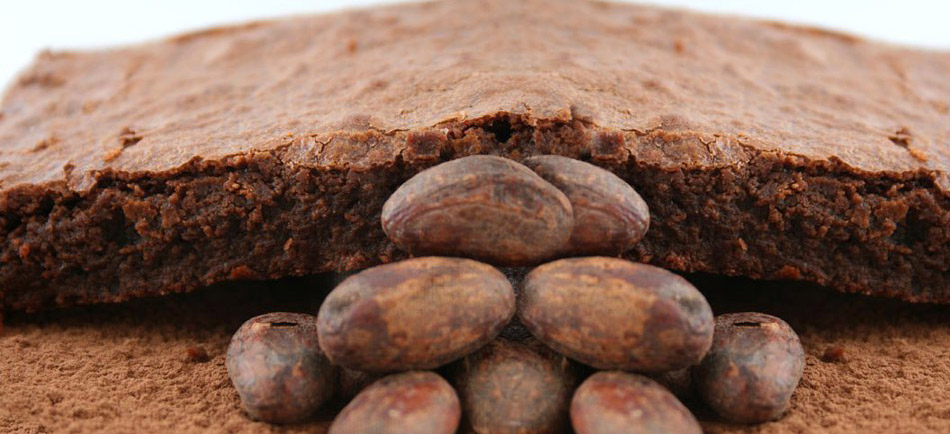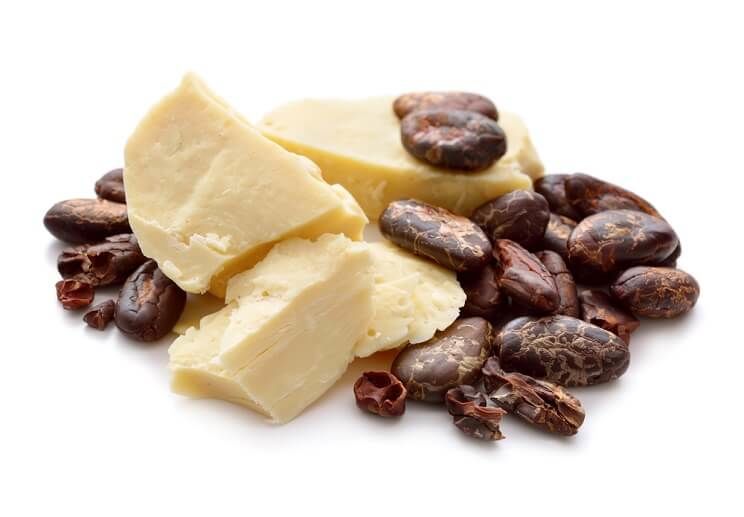 The Spanish have had a love affair with chocolate for hundreds of years even though they aren't famed for producing it, but they are one of the largest consumer markets still today, especially when it comes to drinking chocolate, and its history goes back quite a way...
The Spanish have had a love affair with chocolate for hundreds of years even though they aren't famed for producing it, but they are one of the largest consumer markets still today, especially when it comes to drinking chocolate, and its history goes back quite a way...
For many millennia Cacao grew in the understory of the tropical rainforest the northern Amazon basin. Together with the plethora of plants, animals and insects of the rainforest, it thrived in the shade on the forest floor and lived on the nutrients and water passed down from the canopy above.
The history of this popular plant's use is somewhat clouded by numerous wildly conflicting stories. The myths, legends, propaganda and inaccuracies in the history of Chocolate are profound. Especially suspect are the manufacturers' websites!!
Cacao has been a cultivated crop for at least 3,000 years, probably quite a bit more. Before that, it is certain that the seeds of wild Cacao trees were gathered. Initially, a few Cacao trees would be planted just inside the heavy rainforest, mixed with both wild and cultivated understory plants. Eventually, that grew to more specific plots of Cacao, still under the canopy and within the rainforest.
The people who first utilized Cacao were the inhabitants of what is now Venezuela in northwestern South America, where the tree is native. I strongly suspect that they created Cacao as we know it, just as the Inca created the potato using their rather advanced genetic technology. (Most high production food plants, certainly including Potatoes, Squash, Maize (corn) and Bananas, were engineered over many generations by the natives of their respective areas to produce large and plentiful fruit.) The Olmec Civilization (3500 to 2500 years ago) consumed the beverage and it was used to fortify soldiers during marches and in battle.
Cacao was clearly highly valued by these people and they spread it northward through trade with their neighbours. It was probably the Maya, over 1500 years ago, who brought Cacao to Yucatan in what is now Mexico. Maya urns were often decorated with images of Cacao Pods. The Aztecs who got Cacao from the Maya used Cacao in a number of ways, one common way was as a bitter spice in food (such as today's Molé sauce). The common people often used Cacao as a spice, and possibly also as a base for pasta or bread.
The most well-known way that Cacao was used (and the way that made the deepest impression on the European conquerors) was as a drink. The beans were toasted, ground up, put in hot water and often a bit of maize, vanilla or chillies were added to create the beverage of the Emperor. The water had to be extremely hot for the mixture to work, and from that came the phrase, still used in Mexico, Like Water for Chocolate to mean as hot as anything you can imagine. It seems likely that the consumption of this drink was limited to nobility, priesthood, and ritual occasions. Mixtecs and Oaxaca used it in marriage rites of nobles and deities. While the Maya drank Chocolate hot, the Aztecs seem to have often taken it cold. The term 'food of the gods', is not Aztec, nor Maya, it was coined by a European in the 17th century.

It is well known that Cacao Seeds were valued so highly throughout Mesoamerica that they were used for centuries as currency.
The Aztecs called the drink, and apparently the bean as well, Xocoatl. From this word comes the pan-European word Chocolate. The word Cacao comes from comes from the Mayan word for the plant was "Cacau". Because of a spelling error, probably by English traders long ago, these beans became known as Cocoa beans.
When Europeans first made contact with the Aztec civilization, Cacao was being cultivated and used extensively. The Spanish Conquistadors quickly noticed the benefits of Chocolate and used it to keep their armies marching long distances with little food. From the Aztecs, the Spanish took it to Europe -- where it became part of the then European-wide Imperial quest for more drugs for the polite high society, competing with the British tea and opium, the Catholic countries' coffee and the young USA's tobacco.

There is a great deal of differing information about the arrival of Cacao in Europe. Some sources say that Columbus himself brought the first beans, others say it was Cortes, and a whole list of others have their supporters. Actually, Columbus never showed much interest in the beans that he thought were sheep turds. (He actually burned an entire cargo of Cacao for this reason.) In any case, although almost every country claims to have been the first in Europe to utilize Chocolate, clearly the Spanish were first. There is even the improbable suggestion that Spain kept it a secret for 100 years, however, it seems possible that it took that long to generate European interest in the strange bitter confection.
Initially (in the 1500s), Europeans, primarily the Spanish, were put off by the drink's traditional spicy bitter flavour so they so they began adding European (and recent American import) flavourings to Chocolate, such as vanilla, cinnamon, black pepper and, of course, cane sugar.
Chocolate was widely used in Catholic countries after 1569 when Pope Pius V declared that Chocolate (the drink) did not break the fast -- despite the hearty nutritional aspects of Chocolate. Every Pope for 190 years after him, from Gregory XIII to Benedict XIV affirmed this decision -- the popes loved Chocolate. It became a popular way to nourish oneself on the many religious fast days. This may have reached its climax when Pope Clement XIV was killed with a cup of poisoned Chocolate in 1774!
By the middle of the 1600s, Chocolate houses had opened in Europe; this is before coffee houses started up. Chocolate Houses became social clubs, meeting places for the elite, places to visit and to talk politics. It was trendy and extremely expensive. Coffee was much cheaper and therefore not for the elite, but for the masses. Coffee houses inherited the popularity, the community and the political atmosphere from Chocolate houses when the invention of the Dutch press removed the narcotic effect. The coffee house culture went on to incubate the democratic political movements of the 18th & 19th centuries.
The drink was foamed, not using the Aztec method of pouring it from one cup into another, but using a 'molinillo', a wooden whisk-like tool that is twirled between the palms of the hands. This is commonly used today to foam Chocolate drinks in Mexico. Machine-made Chocolate was first produced in Barcelona in 1780.
As Chocolate spread out of Spain, Hapsburg possessions remained at the forefront of Chocolate manufacturing and use, this included Austria and the Spanish Netherlands (which are today Holland and, the world centre for Chocolate, Belgium!). Hapsburg Emperor Charles VI transferred his court from Madrid to Vienna in 1711 which certainly advanced the use of Chocolate in Austria. However, in 1810 one third of the world's entire Cacao production was consumed by Spain and Venezuela had 50% of world production. Germany surpassed Spain as the world leader in chocolate consumption around 1900.
Originally the way they made the Chocolate drink was to grind the whole bean and add sugar and hot water, it was delicious, mildly intoxicating and somewhat 'Aztec', but apparently too rich and for the European palate. In 1828 the Dutch (Coenraad Van Houten had the patent) developed a press to force about initially 50% and with improvements, 98% of the fat out of Cacao paste -- producing the powder which we are familiar with today. The powder was then mixed with milk, instead of water, to add a little fat, but not nearly as much as was removed. (3% vs. 54%!) The pressing process also produced a major commercially viable by-product: Cocoa Butter!

Twenty years later at the Joseph Fry factory, they discovered a way to mix melted Cocoa Butter back into Dutch powder to create a gooey mass which could be moulded: the first bar Chocolate. In 1875 two Swiss men, Daniel Peter and Henri Nestlé used the sweetened condensed milk they had developed for concentrated infant food formula in to create milk chocolate. The low water content of the milk made it possible to mix it with the Chocolate into a bar that did not spoil quickly. Rudolphe Lindt developed the 'conching process' in Switzerland in 1879, producing for the first time, smooth creamy Chocolate bars like we are familiar with today.
The New World, Mexico and Costa Rica, but primarily Venezuela, was the main supplier of Cacao until the start of the 20th century when the centre of cultivation moved first to the Caribbean and then to Africa (with some also in Asia). In the late 19th century major companies started growing Cacao on large plantations, generally clearing rainforest to provide open land. It was at this time that the extremely low pollination rate of Cacao (1 in 3000) was noticed, but no one paid any attention to it. You will still find scientific sources which suggest this was a natural phenomenon, when in fact, moving Cacao from the rainforest to plantations took it farther away from it's pollinating midges' habitat.
Many of the companies that started making Chocolate in the late 19th century, including Hersheys & Cadbury, were based on religious ideals of abstaining from alcohol -- Chocolate was seen as an acceptable substitute.
There are various suggestions of when Chocolate was introduced into the USA, ranging from the early 1700s to the late 1800s. In 1900 Milton Snavely Hershey, a Mennonite from Pennsylvania began producing milk-chocolate bars and "kisses" with great success. He was anti-alcohol (As was Cadbury & Fry) and saw Chocolate as a good, profitable alternative. In less than ten years he was able to buy two entire towns and name them after him, one previously called Derry Church, Pennsylvania, and the other in Cuba, around his sugar mill. The empire grew even larger during World War I when Milton Hershey encouraged the US Army to add four Hershey bars to each soldier's daily ration!
This completed the sequence that took Chocolate from the divine food of Emperors, through the European Imperial quest for monopolies on mild drugs for high society, into respectability and common usage and finally to candy. Not unlike coca, which followed much the same course through the shady time of patent medicines such as the original colas, through to the time of prohibition to inclusion, at one time, in today's favourite candy-drink Coca Cola!
Chocolate remained popular in Europe, and after World War II many Belgian and French Chocolatiers specialized making fine, high-grade Chocolate. Eventually, in 1994, the Chocolate War established standards and started the huge wave of pure Chocolate Bars made of 70% or more Cacao.